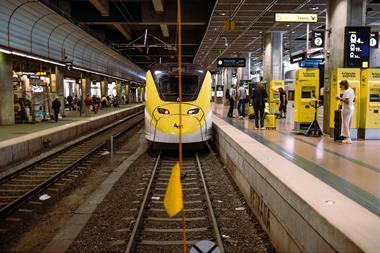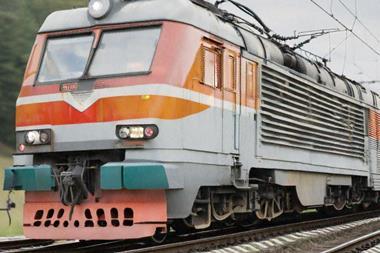A range of investment options are available for institutional investors wanting to allocate to infrastructure. Maha Khan Phillips reports
In the search to match risk with liabilities, infrastructure is an attractive offering. The asset class, which has gained momentum over the past 12 months, tends to have a stable, relatively predictable income stream with a long lifespan. Still, for institutional investors, infrastructure is problematic. It covers such a wide range of offerings that investors have a difficult time narrowing down what it is they are getting out of the asset class.
"The problem with infrastructure is that it covers a multitude of sins," says Jane Welsh, senior investment consultant at Watson Wyatt, based in the UK. "You could go from running a hospital, where your counterparty is the UK government and the investment is low risk, right the way through to building new power stations where construction risk is a big issue."
It is no surprise, then, that investment banks, private equity houses, property firms, and asset managers are all providing solutions, with each provider bringing a different set of skills through listed and unlisted vehicles. "The jury is still out on what infrastructure is. Broadly speaking, investors aren't sure where to put it. Infrastructure can mean so many different things," says Jon Lekander, chief investment officer of Aberdeen Property Investors.
For many managers, infrastructure has to have a social benefit to be considered part of the asset class. "From our point of view, based on the investment criteria for our Global Infrastructure Fund, infrastructure has to serve as an essential service to a community," says Hafeez Ahmed, chief financial officer and executive director of ABN Amro Infrastructure Capital Management. "If it isn't an essential service, then it wouldn't be defined as part of the infrastructure asset class this fund would invest in."
Others break the asset class into economic or concession-based infrastructure - which supports commerce and typically involves a fee charge - and social infrastructure, which consists of social services facilities such as schools and hospitals.
There are a variety of ways to access the asset class. Larger pension funds, particularly in the Netherlands and Canada, have made direct investments and forged partnerships with providers. Ontario's $40bn (e bn) pension scheme for public sector workers - Omers - is one example. The fund set up Borealis Infrastructure and through it invests directly in the asset class. Borealis also provides services to third parties. As of December 2005, Omers had invested $3.7bn in infrastructure, with an ultimate goal of having 15% of its fund allocated to infrastructure over time.
But managers warn that direct investments are not suitable for the majority of pension schemes. "It's not something to be taken lightly," says Stephen Vineburg, global head of infrastructure for First State Investments. "It makes sense for the big funds that don't necessarily want to get all their exposure from pooled vehicles. But these assets aren't like buying shares or bonds. These are ‘real life' businesses that face major capital budgeting decisions and operate in a complex regulatory environment. If you're running an airport and you're not doing a good job, people will let you know very quickly."
First State made its initial investment in infrastructure on behalf of an Australian pension fund in September 1994. It invested in the Australian M4 motorway, and, says Vineburg, the investment had a private equity-style profile. "Now we are in 2007 and the road is in the final three years of its concession life." The road now gets handed back to the state, he says, and goes from being a low cash yielding risk asset to a sum certain annuity.
First State points out the importance of stages of development in putting together a risk-adjusted return profile. During early construction and development stages, the asset class is usually not producing income, so, the firm points out, the motivation is to "earn a risk-like premium on the capital component". As the business develops, the risk decreases, and therefore the capital value of the business and the internal rate of return decreases. Ahmed suggests that initial IRRs could be about 9-11%, while later-stage investments have IRRs of 6-9%. Others put the figures higher, at 15-20% initially, and 10-15% thereafter.
Welsh believes most pension schemes benefit from using unlisted pooled funds, many of which are structured as limited partnerships. "Investing directly or co-investing require different skill sets. You're relying to a large extent on the due diligence of the lead manager, but you'd still be a direct shareholder in the company, responsible for the legal issues. Our clients have chosen to invest in unlisted pooled funds, because they have an asset manager who is responsible for selection, and the headache is with the managers," she says.
Within the unlisted offerings, Watson Wyatt has encouraged its clients to diversify, because as much as 20-30% of a fund could be concentrated on one project.
Welsh says that the majority of Watson Wyatt's clients are not interested in listed vehicles. "A pooled vehicle fund that would be listed on the London Stock Exchange, such as an investment trust, is an interesting approach but then you are subject to the volatility of the day-to-day markets. This perhaps undermines the value of the assets diversification benefits."
Others disagree. The global listed infrastructure market is worth more than $2.1trn, according to Standard & Poor's, which has its own Global Infrastructure Index, and unsurprisingly argues that listed infrastructure offers stable yields that are higher than the broad stock market and exhibits lower volatility, which easily fits into a liability-matching framework. S&P's index includes 75 large, liquid infrastructure stocks that balance representation across the utilities, transportation and energy sectors. At each rebalancing, the utilities, transportation and energy ‘clusters' have a weight of 40%, 40% and 20% respectively, with the number of constituents in each cluster standing at 30, 30, and 15. No single stock has a weight of more than 5% in the index.
Some institutional investors have chosen to build up stakes in quoted companies that are infrastructure businesses, effectively building a portfolio of listed infrastructure assets. Welsh argues that this removes the value-added aspect of infrastructure. "Our view is that this is really a listed equity strategy," she says. "Why would you want to differentiate that particular part of the market? It's not going to behave in a different sort of way, really."
Another issue investors have to take into consideration when choosing a vehicle is the time frame of the investment. Infrastructure assets generally have long lifespans of about 25-30 years. In the case of airport lease contracts, that could be up to 99 years. Meanwhile, fund durations stand at between five and 10 years. "The solution would be to build long-term funds, which would make a lot of sense for investors," says Lekander. The firm is looking at the asset class at the moment, but has yet to offer any products to the market.
Vineburg says it is an issue for which managers are trying to find a solution. "Many clients don't want the manager to come back after three years and say ‘we've sold the airport here's your money back'. They want enduring exposure, and everyone is trying to grapple with that."
Managers have proposed a range of solutions, from lengthening the terms of the funds to creating extension options. "The problem is that property is coming up the stairs to infrastructure, and private equity is coming down the stairs to infrastructure and they are bashing against each other in the corridor on the way," Vineburg says.
David Morley, director of institutional business at Henderson Global Investors, suggests that one option would be the securitisation of the cash flow that comes out of a particular project, which would enable investors to convert their holdings into a more liquid bond type holding after 10 years. "That way," he says, "they can disinvest at that stage or continue to hold that investment through to maturity."
Others believe that the asset class will eventually develop a secondaries market, following in the footsteps of private equity. An estimated $15bn has been raised in secondaries by private equity managers this year alone, say industry punters. Although it would take many years for infrastructure to gain that much traction, it is likely that a secondary market will become important in the future.
At the moment there are still some obstacles to growth, with fee structures a particular concern, says Welsh. Fees are typically structured in the same way as private equity, involving 1-2% on commitment, plus a carried interest of up to 20%. "The issue is - are those fees right given the nature of this asset class, particularly if we're focused on low-risk income generation?" she says. "I'm concerned with this level of fees. I'm not sure they are justified."
Unsurprisingly, managers disagree. "In the early years you require specialist skills," says Morley. "You can't just go onto the stock exchange and buy them. You have to have a network of contacts. So accessing the deal flow is very important. Having secured the asset, you have to enhance the value of the portfolio. All the value-added stuff comes in the early years, and it's reasonable to expect investors to pay private equity-type fees and have private-equity type structures. Thereafter, investors would probably have a more liquid holding, one where they are not paying private equity type fees for 25-30 years of the project."
Others say that fee structures vary depending on the stage of the project, and that later, lower-income stages do not necessarily charge the higher fees.
Welsh is unimpressed. "Demand exceeds supply. There aren't that many managers, and there aren't that many funds. As times get tougher, maybe the end user will have more negotiating power. There are some very pricey transactions in the market, and I think these transactions will have to generate half-decent returns and an awful lot of good things are going to have to happen."
One recent deal said to be expensive was the December 2006 purchase of London City Airport by Global Infrastructure Partners (GIP), the joint venture between Credit Suisse and GE Infrastructure. Industry participants suggest that it is a sign that more providers are getting in on the game and establishing themselves in the asset class. "Everyone wants to get their first deal done and that causes competition for the transactions," says one observer.
Since many governments are under-funding infrastructure, managers believe the market will grow significantly. But Vineburg believes many investors have yet to get to grips properly with the characteristics of the asset class. "The sector itself doesn't lend itself to quartile ranking or a multi-sector analysis and some conventional consultants who are more used to picking equity managers would find this difficult because it's a different skill set. You have to look the manager in the eye. You can't just phone on a Monday and change your mind."
For those investors that do want to take the plunge, First State points out the growing opportunities. Europe's need for private sector funding of infrastructure induced by issues such as the financial pressure of its ageing population, general fiscal stress, and historic under-investment in infrastructure will mean opportunities from privatisations in the UK, Germany, France, Italy, and the Netherlands. "My gut feeling is that the market could be very, very big," says Lekander.












